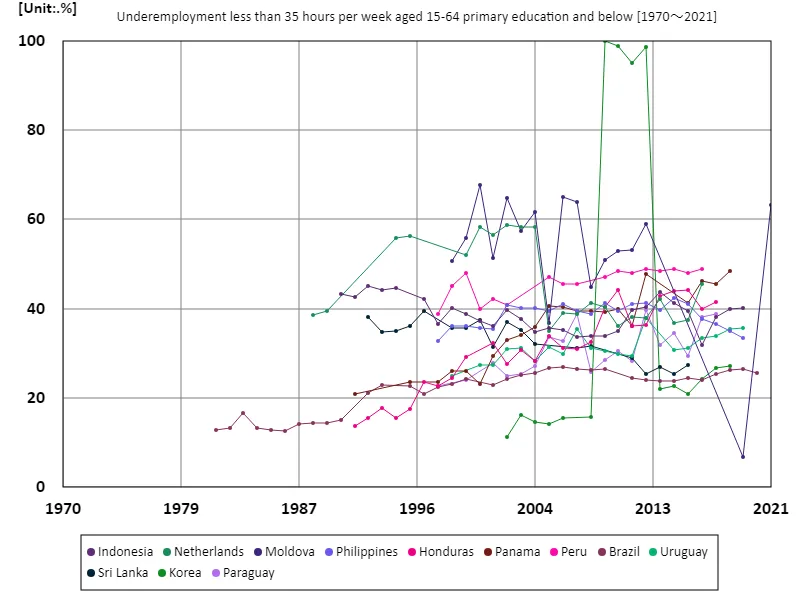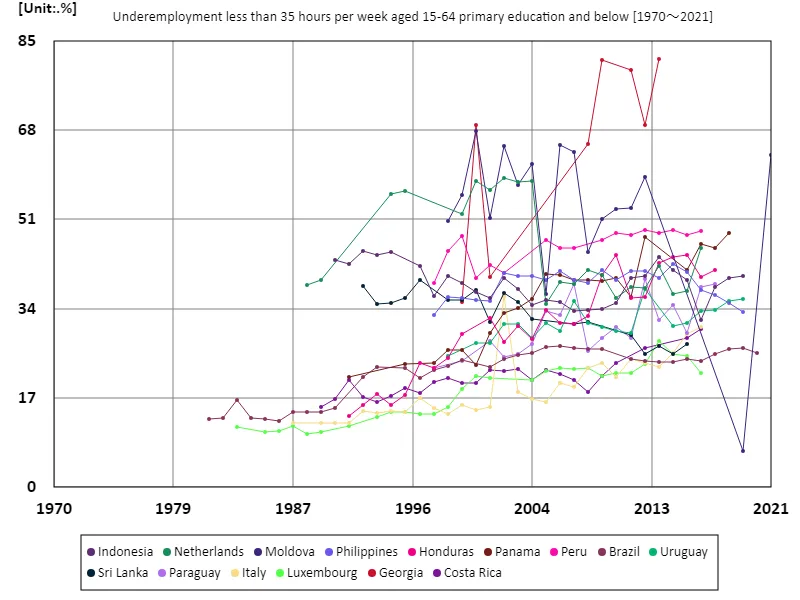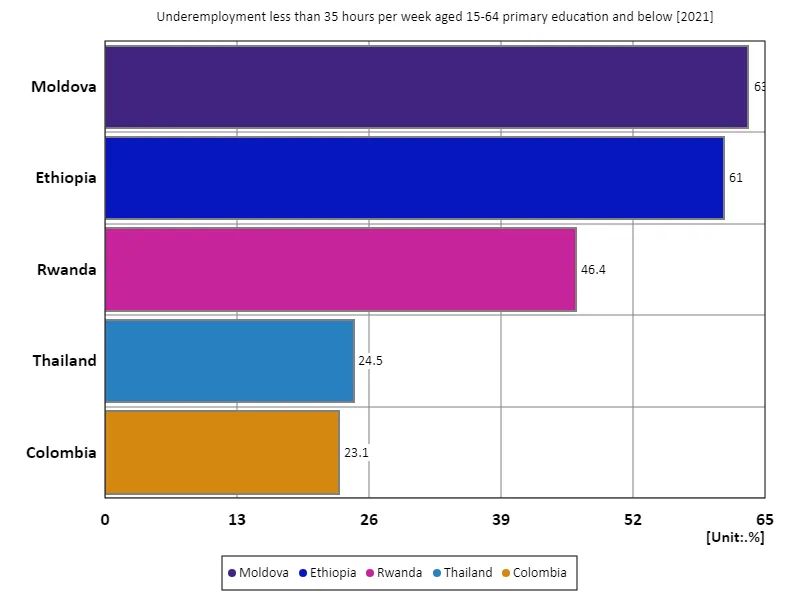- Abstract
- Ages 15-64, underemployed less than 35 hours per week, with primary school education or less (% of working-age population with primary school education)
- Ages 15-64, underemployed less than 35 hours per week, with less than primary education (percentage of working-age population with primary education) (Worldwide)
- Ages 15-64, underemployed less than 35 hours per week, with primary education or less (% of working-age population with primary education) (World, latest year)
- Reference
Abstract
Moldova’s 63.4% underemployment rate in 2021 for individuals aged 15-64 with primary school or less highlights significant labor market challenges. Historically, many countries with high underemployment rates face limited access to quality education, leading to a reliance on informal or part-time work. In Moldova, economic factors like low wages, migration for better opportunities, and a large rural population contribute to underemployment. Over time, improving education, economic diversification, and labor market reforms have been key to reducing underemployment in other nations.
Ages 15-64, underemployed less than 35 hours per week, with primary school education or less (% of working-age population with primary school education)
From 1981 to 2021, global trends show a significant shift in underemployment for 15-64 year-olds with less than primary education. South Korea’s peak rate of 100% in 2009, now down to 27.1%, reflects substantial progress in improving education and workforce participation. Countries with high underemployment historically face challenges like limited access to education and a reliance on informal jobs. Over time, education reforms, industrial growth, and improved job quality have reduced underemployment. This trend underscores the importance of workforce development in achieving sustainable economic growth.


The maximum is 100%[2009] of Korea, and the current value is about 27.1%
Ages 15-64, underemployed less than 35 hours per week, with less than primary education (percentage of working-age population with primary education) (Worldwide)
From 1981 to 2021, the global trend in underemployment (less than 35 hours per week) among individuals aged 15-64 with less than primary school education shows a notable decline. South Korea, which reached a peak rate of 100% in 2009, now stands at just 27.1% of that peak, reflecting substantial improvements in education and labor market conditions. Historically, high underemployment rates have been linked to low educational attainment and informal labor markets. Over time, advancements in education, industrialization, and workforce policies have driven this positive shift, highlighting the importance of skills development for reducing underemployment.


The maximum is the latest one, 81.5% of Georgia
Ages 15-64, underemployed less than 35 hours per week, with primary education or less (% of working-age population with primary education) (World, latest year)
In 2021, Moldova had the highest rate of underemployment among individuals aged 15-64 with less than primary school education, at 63.4%. This reflects ongoing challenges in labor markets with limited educational opportunities. The global average for this demographic stands at 43.7%, highlighting widespread issues of underemployment, especially in regions with low educational attainment. Historically, countries with high underemployment face structural economic issues, such as reliance on informal sectors and migration. Addressing education gaps and fostering job quality are key to reducing these rates globally.


The maximum is 63.4% of Moldova, the average is 43.7%, and the total is 218%



Comments